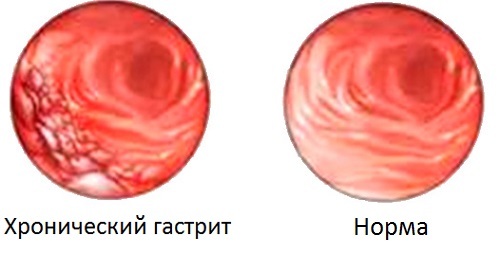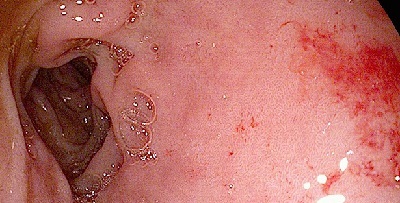Duplex scanning of the vessels of the head and neck - this is one of the most modern techniques for the study of blood vessels. From this article you will learn about the nature of the procedure, the testimony to its purpose and information.
Indications for head and neck vessels duplex
Duplex vascular scanning or duplex vessels is a special kind of ultrasound or sonographic study designed specifically for studying vascular structures and the nature of the blood flow in them. This method differs from conventional ultrasound studies by a combination of two main techniques:
- The usual B-mode ultrasound is the same gray-white picture depicting organs and tissues in a planar mode. In duplex mode, the vessels, depending on the inclination and rotation of the sensor, look like longitudinal or transverse sections of them. In this mode, you can consider their progress, measure the diameter, estimate the clearance, the presence of thrombi or other inclusions in them. Ultra-modern sensors can even help to examine the layered image of the vascular wall - like a cut in a microscope.
- Dopplerometry is a type of ultrasound based on recording the flow of moving blood particles in blood vessels. With the help of the Doppler effect, the fact of blood flow can be recorded, its intensity, the direction of blood flow, its speed, resistance indices and other important indicators.
 Procedure for duplex scanning of neck vessels
Procedure for duplex scanning of neck vessels By analogous principles, a duplex examination of all blood vessels of the human body takes place. The greatest significance in modern medicine is the duplex scanning of the arteries and veins of the lower limbs, the heart and its large vessels, as well as the vessels of the head and neck. It's about the latest research that we'll talk about in more detail.
Why do a duplex of the vessels of the head and neck? The fact is that the brain, its structures and the vascular system have always been a stumbling block in diagnosis. The brain is securely covered with a cranium, so a few decades ago the only objective method of research was X-ray studies. In addition to the X-ray, various neurological tests that evaluated the function of the brain and indirect signs of cerebral circulation disorders came to the rescue. Modern techniques successfully study the vessels of the head and neck that are accessible to the study and which feed the brain. Thus, assessing the blood flow in these feeding stems, you can indirectly judge the similar blood flow in the brain tissues.
The cerebral blood is supplied from the branches of the carotid artery, vertebral arteries, subclavian arteries and brachiocephalic trunk, which mutually replace each other and form the Willis circle. The more traditional and common name of all these arteries is the brachiocephalic arteries, or the BMC.Accordingly, duplex scanning of the vessels of the head and vessels of the neck is more often called ultrasound of the BCA.It is prescribed by neurologists or therapists, but ultrasound doctors perform it.
 Willis circle
Willis circle Indications for the
study Let's define the list of conditions and diseases that can and should be investigated by this method:
- Atherosclerosis of cerebral vessels or suspected of it. Such suspicions arise in the unfavorable profile of cholesterol and triglycerides, excessive body weight, hereditary history, neurological signs of cerebral blood flow suffering.
- Endoarteritis of the vessels of the neck and brain - most often an autoimmune disease affecting the wall of the arteries of the human body.
- Aneurysms and other vascular malformations in the cranial cavity - already diagnosed by previous ultrasound, angiography, computed tomography or suspects based on clinical symptoms or patient complaints.
- Vasculitis is a broad group of inflammatory vascular diseases, including autoimmune diseases.
- Condition after surgical treatment of vessels of the head, neck or brain.
- Conditions accompanied by external vessel syndrome. Such conditions include compression of the vascular trunks with pathological foci, hematomas, bone fragments and tumors.
- Vascular thrombosis or suspected of them.
- Injury of head and neck.
- Ultrasound of the BSA can be prescribed in doubtful cases and with an unclear clinical picture: memory impairment, pathological drowsiness, convulsions, mental changes, unclear headaches, dizziness, loss of consciousness, deterioration of vision and hearing.
 The main symptoms of vasculitis - autoimmune vascular disease
The main symptoms of vasculitis - autoimmune vascular disease Pros and cons of the
method Like any diagnostic method, duplex scanning has both positive and negative sides. Let's start with the pluses:
- Complete security. Medical ultrasound does not have any damaging or disfiguring effects on the human body, so this study can be done for young children and pregnant women.
- Painless and non-invasive. The procedure of duplex scanning is completely painless and does not bring any discomfort to the patient.
- High diagnostic accuracy. Considering the fact that the examined vessel sees the doctor in two projections, simultaneously recording the blood flow in it, the informativeness of such studies is comparable with angiography.
- Relative simplicity of the study. Ultrasound scanning takes about 20 minutes, does not require bulky devices, the help of additional medical staff, but requires the deepest knowledge of the anatomy and physiology of the vessels from the doctor-researcher.
- No contraindications and complications of the procedure - the study can be assigned completely to all categories of patients, and in the history there have not been recorded any serious consequences.
- No special preparation is required for the study, such as diet, cleansing enemas, taking certain medications and administering solutions.
We list the shortcomings of the methodology:
- Relative cost of the method. The point is that for duplex studies special ultrasound devices are needed, which are often not available for small clinics and government institutions.
- The possibility of research "here and now."This is a general drawback of all ultrasound studies, since the "picture" can only be assessed in real time, in motion, and not by frozen pictures.
- Narrowly researched area. It is important to understand that scans of brachiocephalic vessels only indirectly indicate blood circulation in the brain. Through the skull of an adult human ultrasonic waves can not penetrate, therefore the brain itself and its vascular system are hidden from the researcher.
How the
is conducted The procedure for duplex scanning of the vessels of the head and neck is fairly simple and takes no more than 30 minutes:
- The patient arrives at the appointed time and settles on the couch. The study can be performed in the patient's position lying on his back or side, sitting or half-sitting. No special training is required for the procedure.
- The doctor applies a special gel to the sensor and neck of the patient.
- Then the doctor easily drives the sensor along the side of the neck. Sometimes a specialist in diagnosis can ask the patient to change the position of the body, cough, tense, hold his breath.



